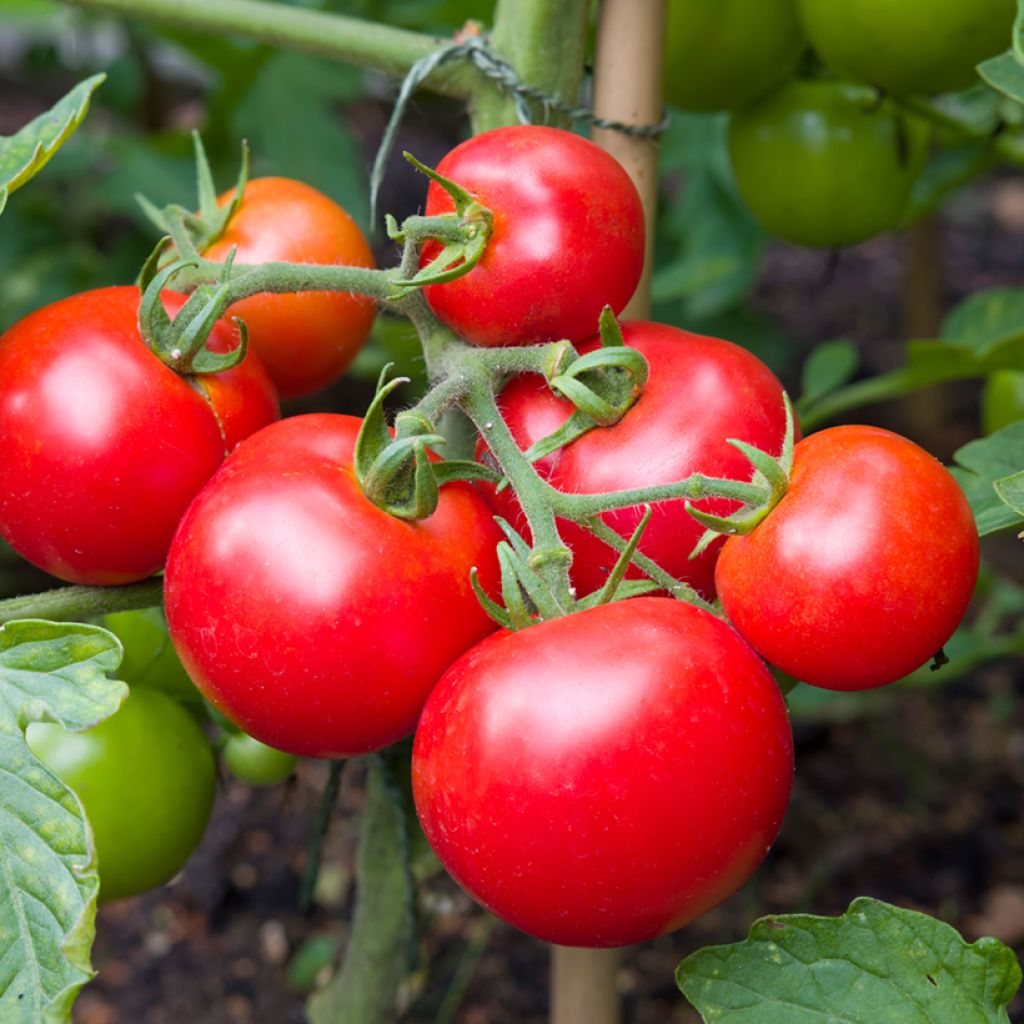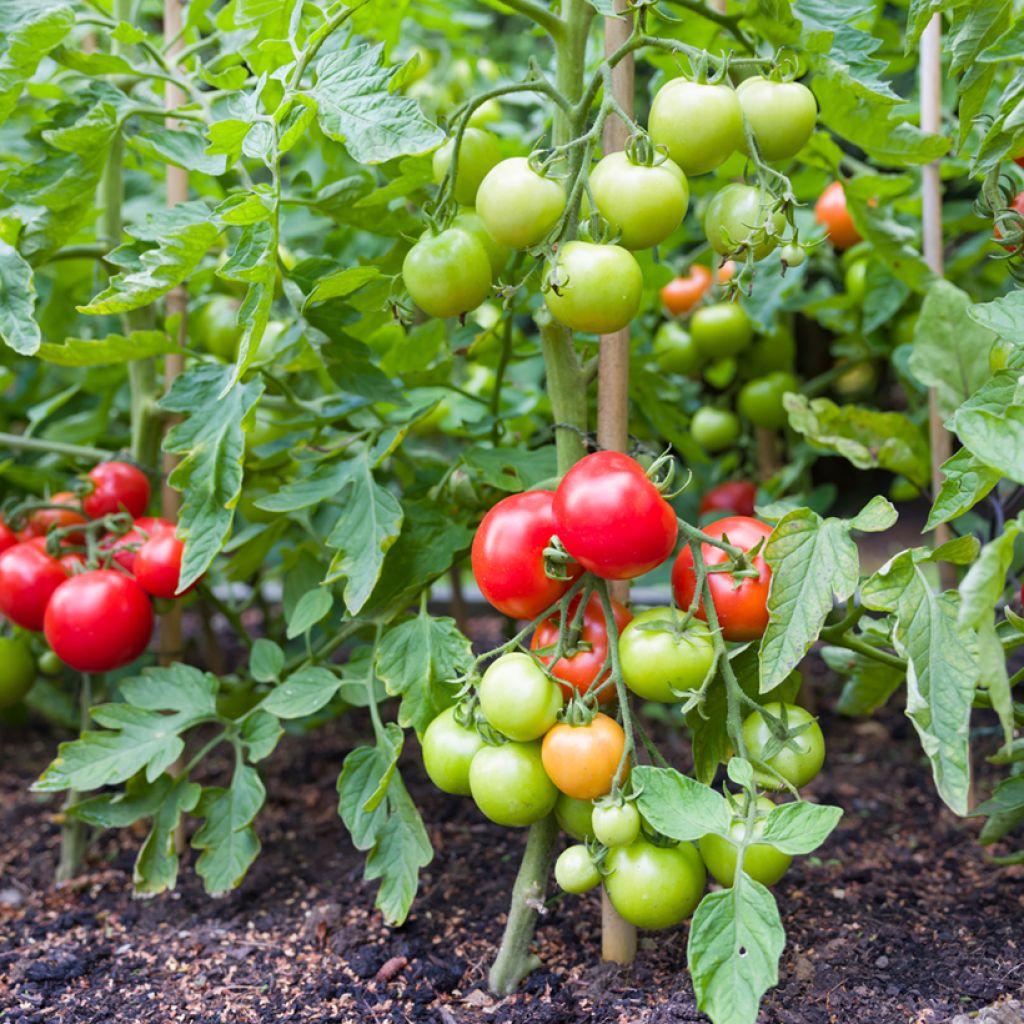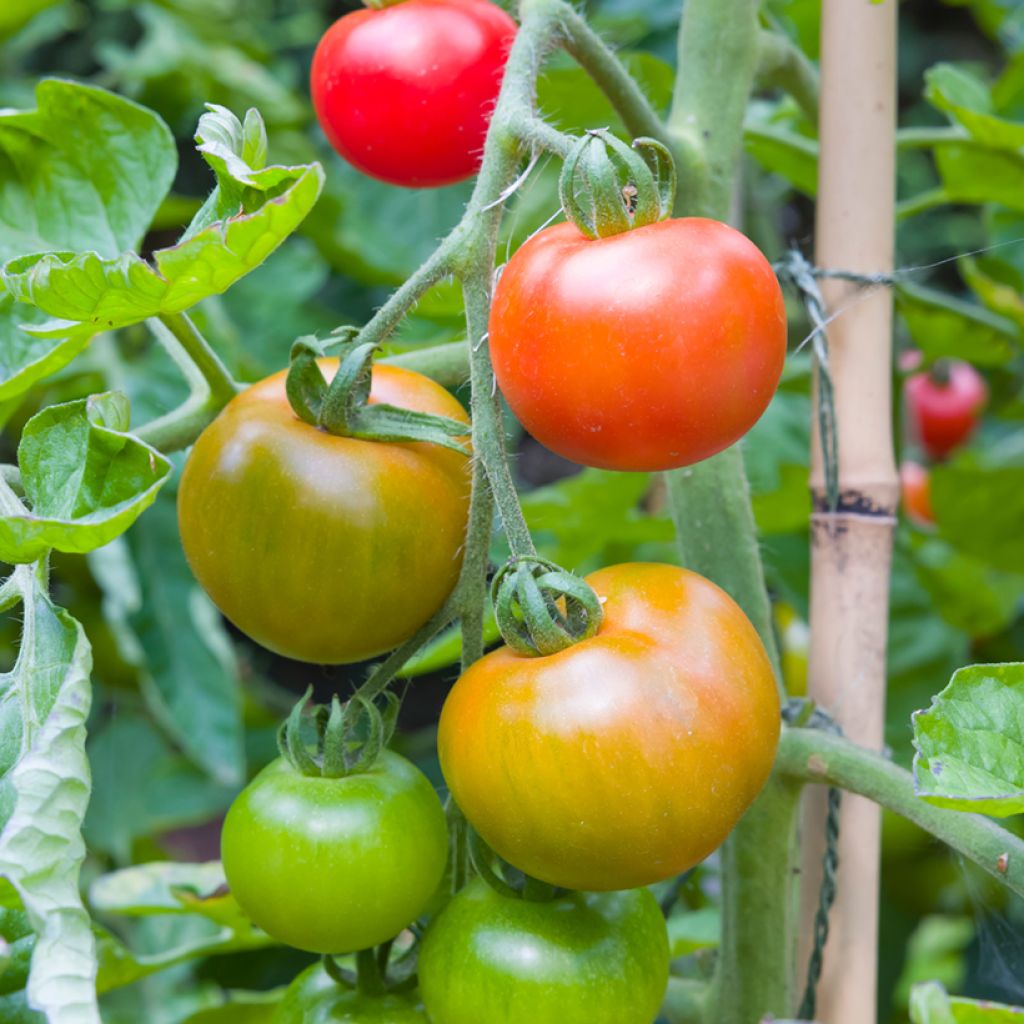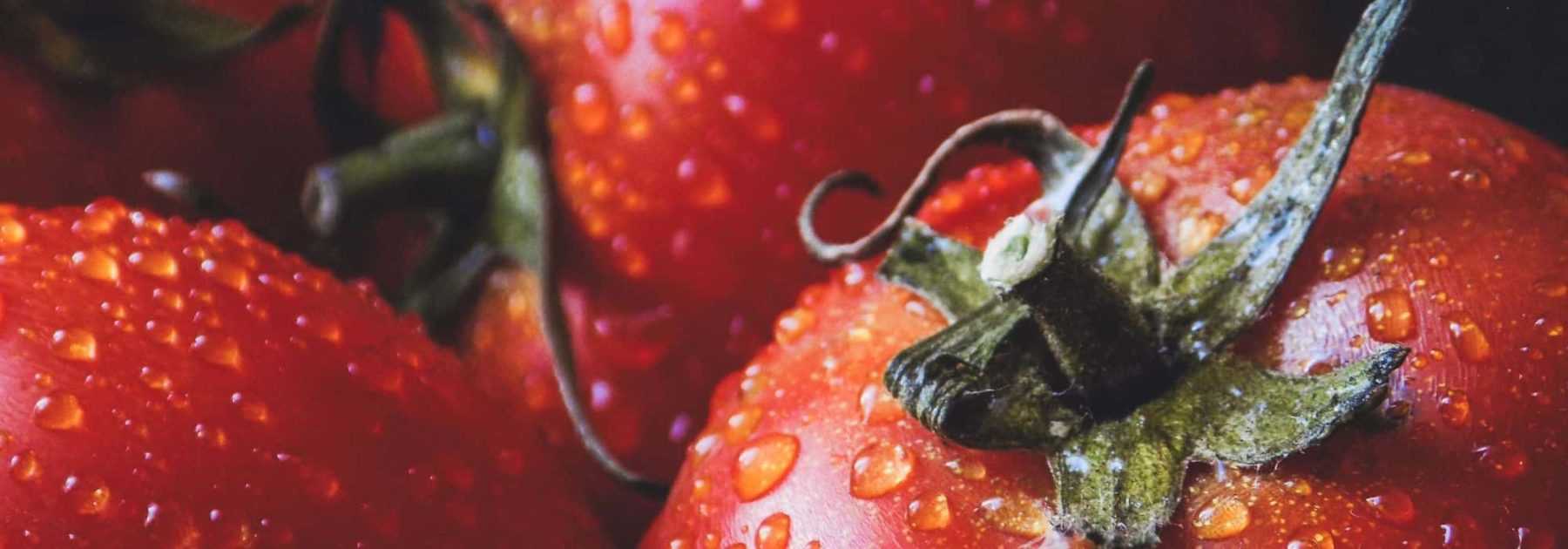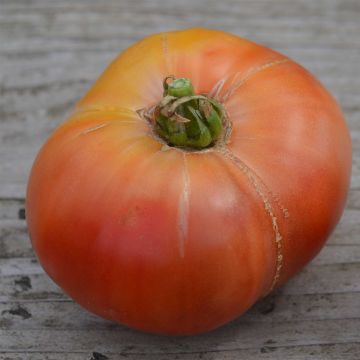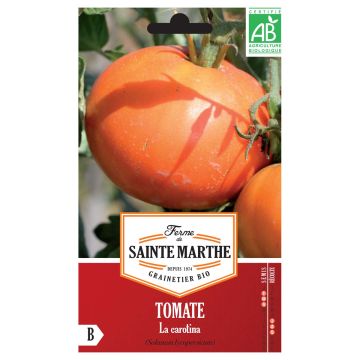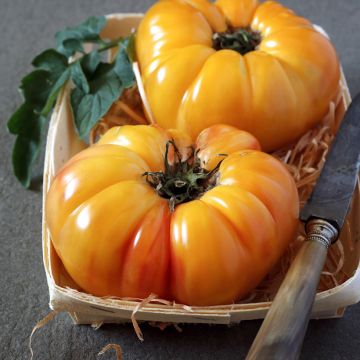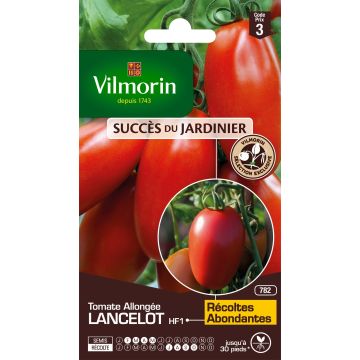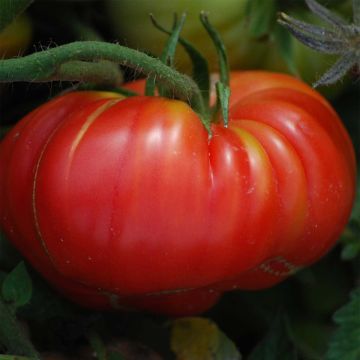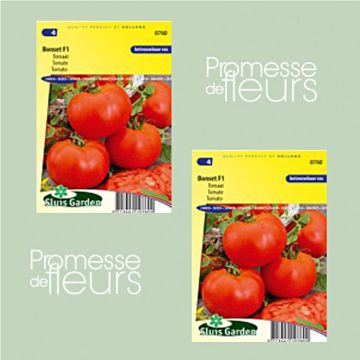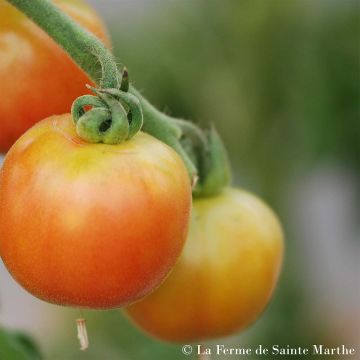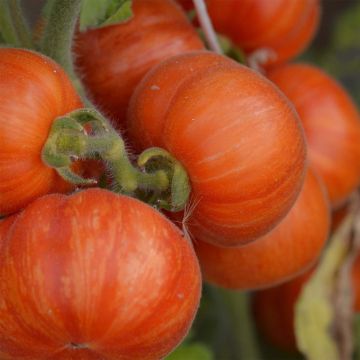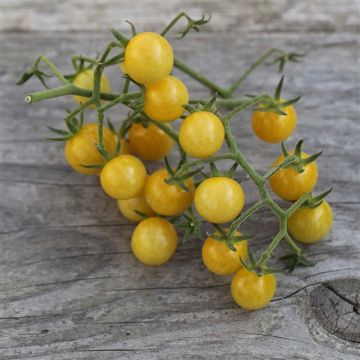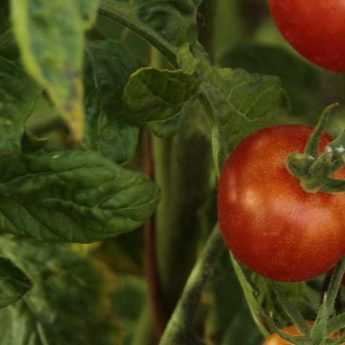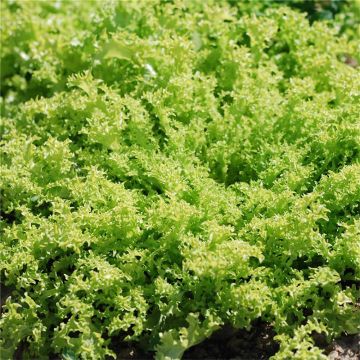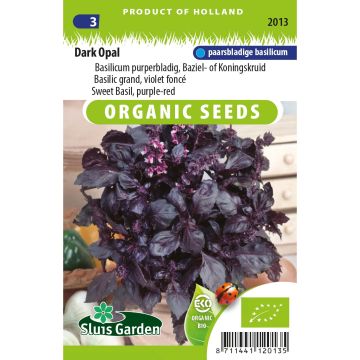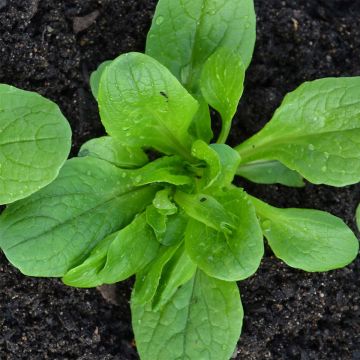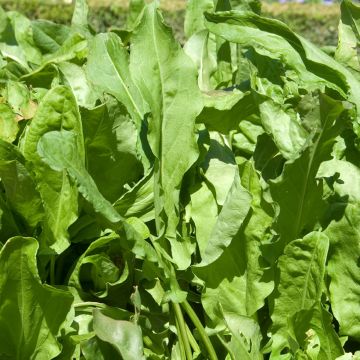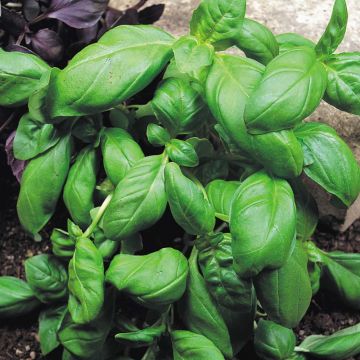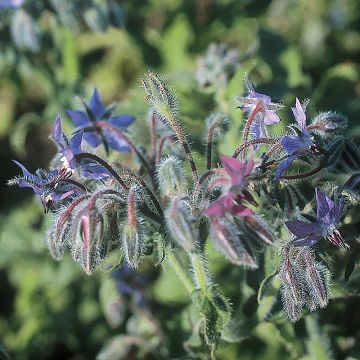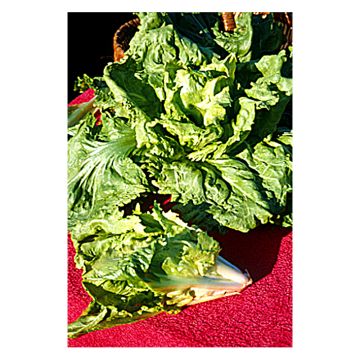The tomato, originating from South America and Central America, was cultivated by the Incas long before the arrival of the Conquistadors. This solanaceous plant stands out for its incredible diversity of shapes, sizes, and colours. It is a relative of aubergines and peppers, for example.
Old varieties like 'Moneymaker', with indeterminate growth, can live up to two years, while modern determinate varieties stop at the bush stage and do not require staking or trellising.
Introduced to Europe along with other New World plants such as corn and potatoes, the tomato was long seen as toxic due to its resemblance to the mandrake fruit. It was mainly appreciated for its ornamental aspect and medicinal virtues. Only in the 20th century did it become an essential food. Perennial in tropical climates, it is cultivated as an annual in our latitudes, producing small yellow flowers that turn into very colourful and aesthetic fruits, adding a beautiful visual touch to the vegetable garden.
The tomato fruit, low in calories, is rich in water, vitamins (C, provitamin A), and trace elements, as well as lycopene, a powerful antioxidant whose bioavailability increases with cooking. Its nutritional and taste qualities make it a summer essential. The numerous varieties cater to various culinary needs: salads, sauces, cooking, or fresh consumption. However, beware: green fruits, stems, and leaves contain solanine and should not be consumed.
To ensure a tomato is ripe, check that it has acquired its final colour and that its texture is still firm, but begins to soften slightly. Once harvested, it keeps better at room temperature but can be refrigerated or processed (preserved, dried, in sauces or juice) for extended storage.
It is advisable to grow several different tomato varieties to reduce risks related to climatic hazards or diseases. Burying a plant up to the first leaves will stimulate root growth, thus promoting abundant production. Finally, beneficial associations, such as basil with tomatoes, are perfect both in the garden and on the plate.



































